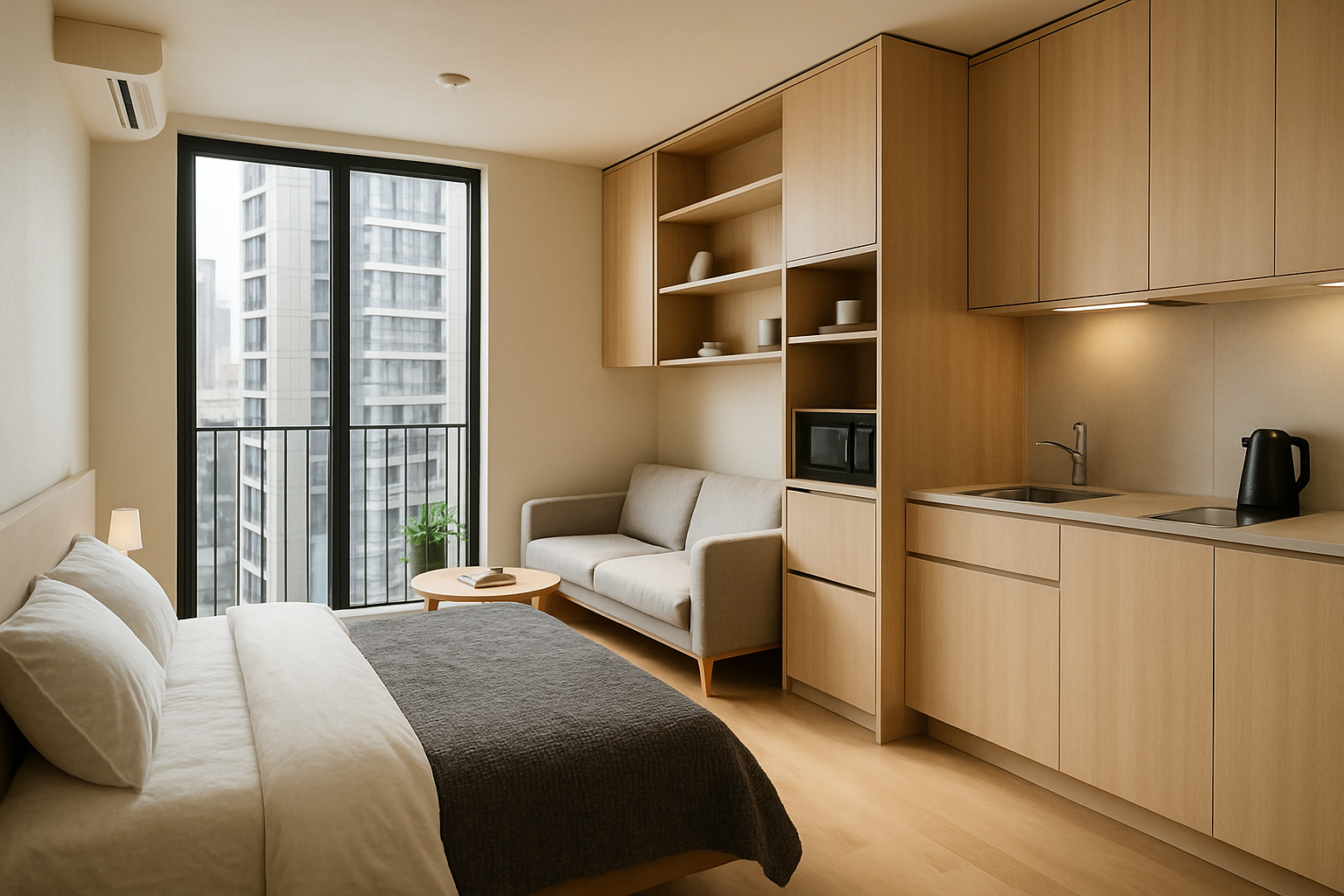Micro-Apartments: The Future of Urban Living?
In a world where city populations are booming and housing costs are skyrocketing, a new trend is emerging in the real estate market: micro-apartments. These compact living spaces, typically under 400 square feet, are challenging traditional notions of what constitutes a home. As urban centers grapple with housing shortages and affordability crises, micro-apartments offer a potential solution that's catching the attention of developers, investors, and city planners alike.

The Rise of Micro-Living: A Response to Urban Challenges
Micro-apartments have emerged as a direct response to the pressing issues facing many major cities. Urbanization, coupled with limited available land and soaring property prices, has created a perfect storm for housing crises in metropolises worldwide. These compact living spaces offer a pragmatic solution to accommodate more residents in high-demand areas without extensive new construction or urban sprawl.
The concept draws inspiration from densely populated cities like Tokyo and Hong Kong, where efficient use of space has long been a necessity. However, the modern micro-apartment trend is gaining traction in unexpected places, from New York and San Francisco to London and Berlin. This shift reflects changing attitudes towards minimalism, sustainability, and the prioritization of location over living space.
Design Innovations: Maximizing Livability in Minimal Space
The success of micro-apartments hinges on innovative design that transforms small spaces into functional, comfortable homes. Architects and interior designers are pushing the boundaries of creativity to develop solutions that make every square inch count. Foldable beds that transform into desks or dining tables, hidden storage compartments, and modular furniture are just a few examples of the ingenuity at play.
Smart home technology also plays a crucial role in enhancing the livability of these compact spaces. Voice-controlled lighting, temperature regulation, and security systems can significantly improve the user experience without taking up precious physical space. Additionally, communal areas within micro-apartment buildings often feature shared amenities like gyms, lounges, and co-working spaces, extending the living area beyond the individual unit.
The Financial Equation: Affordability and Investment Potential
From a financial perspective, micro-apartments present an intriguing proposition for both renters and investors. For renters, particularly young professionals and students, these units offer an affordable entry point into desirable urban locations that might otherwise be out of reach. The trade-off of space for prime location and lower overall housing costs can be attractive in cities where traditional apartments command exorbitant rents.
For investors, micro-apartments can yield higher returns per square foot compared to conventional properties. The ability to fit more units into a given building footprint can translate to increased rental income. However, it’s important to note that the initial development costs can be higher due to the specialized design and fixtures required. The long-term viability of micro-apartments as an investment hinges on sustained demand and potential regulatory changes.
Regulatory Landscape and Urban Planning Implications
The proliferation of micro-apartments has not been without controversy, prompting cities to grapple with zoning laws and building codes. Many municipalities have minimum size requirements for residential units that preclude the development of micro-apartments. However, some cities are revisiting these regulations, recognizing the potential of micro-units to address housing shortages.
Urban planners are also considering the broader implications of widespread micro-apartment adoption. While these units can increase housing density and potentially revitalize urban cores, there are concerns about the impact on neighborhood character and infrastructure. Balancing the need for affordable housing with maintaining livable, diverse communities remains a challenge for city officials and developers alike.
The Societal Shift: Changing Attitudes Towards Space and Ownership
Perhaps the most profound aspect of the micro-apartment trend is what it reveals about changing societal attitudes towards living space and material possessions. The willingness to trade square footage for location and amenities reflects a shift in priorities, particularly among younger generations. This mindset aligns with broader trends towards minimalism, sustainability, and the sharing economy.
The rise of remote work and the increasing importance of digital rather than physical possessions are also contributing factors. For many, the idea of home is evolving from a spacious sanctuary to a efficient base from which to experience city life. This shift has significant implications for the future of urban development and the real estate market as a whole.
Looking Ahead: The Future of Micro-Apartments
As cities continue to grow and evolve, micro-apartments are likely to play an increasingly important role in the urban housing ecosystem. Their success will depend on continued innovation in design, adaptability to changing regulations, and alignment with shifting consumer preferences. While they may not be a universal solution to housing affordability, micro-apartments represent a creative approach to urban living that challenges traditional notions of home and community.
For real estate professionals, investors, and urban planners, understanding the micro-apartment trend is crucial. It represents not just a new property type, but a broader shift in how we conceptualize urban living spaces. As this trend continues to unfold, it will undoubtedly shape the future of our cities and the real estate market for years to come.





